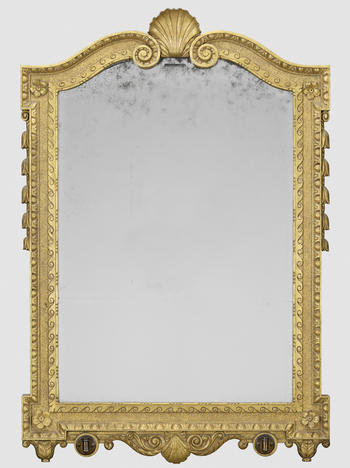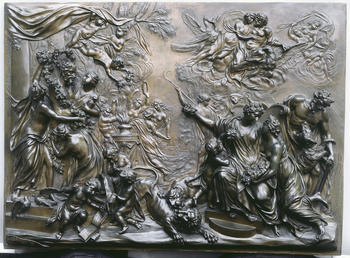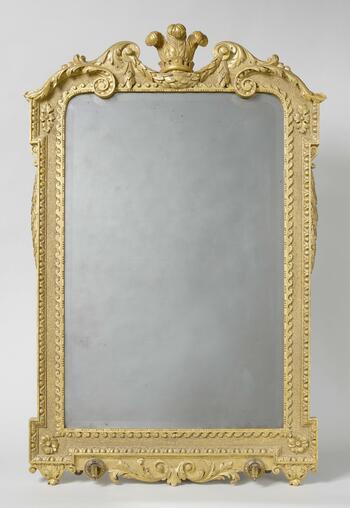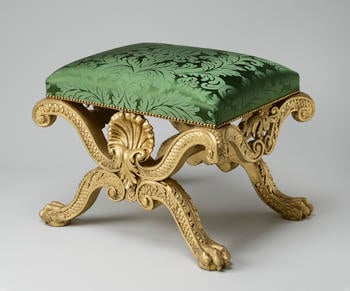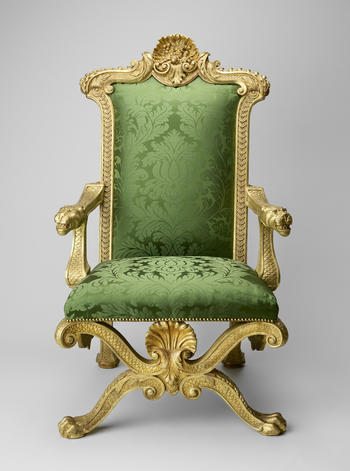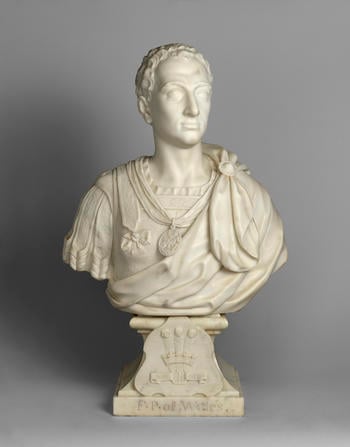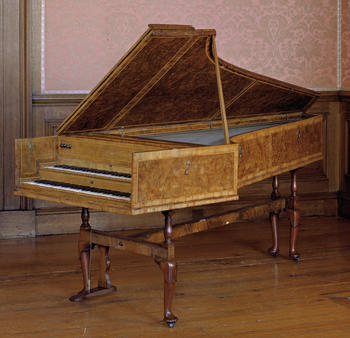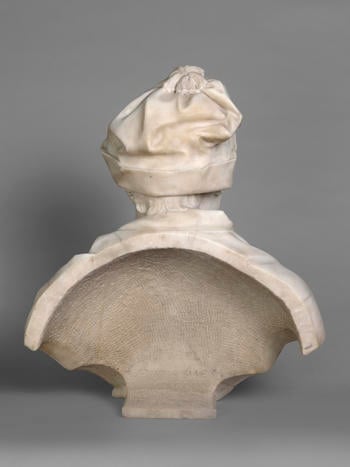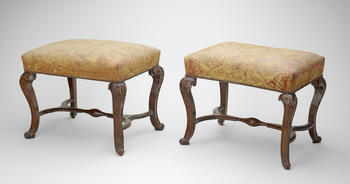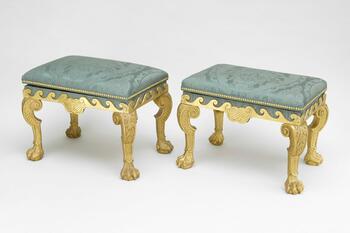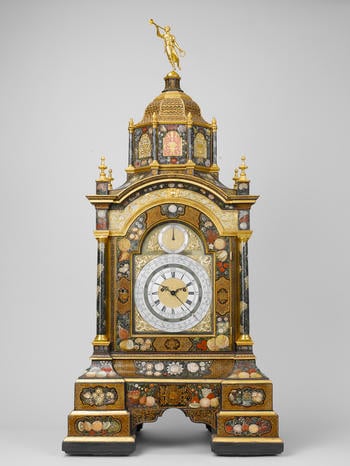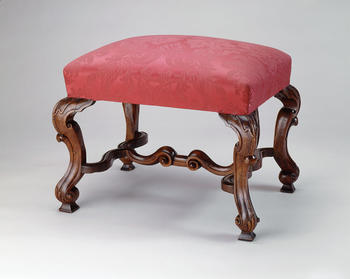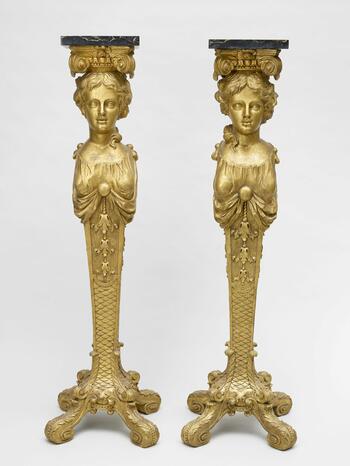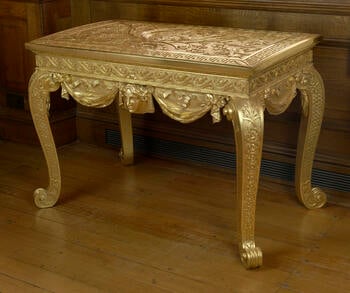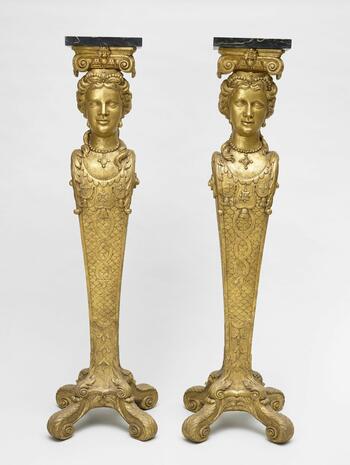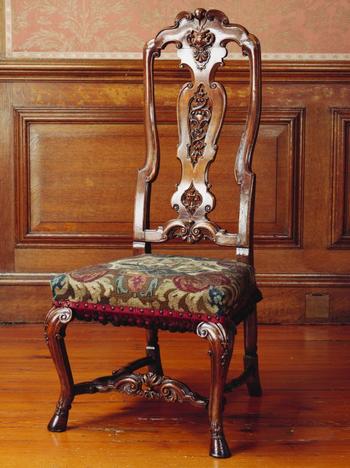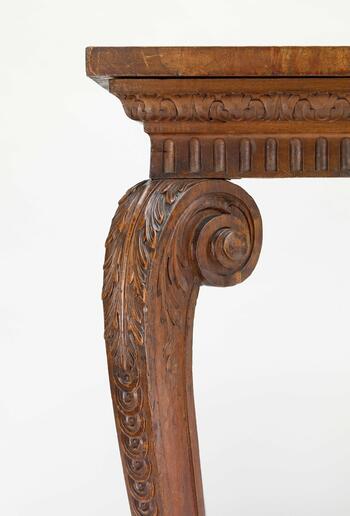
Furniture and Sculpture

George Frederick Handel (1685-1759) ©
By the 1730s, the Palladian style in architecture had taken hold in Britain and was evident in furniture design. William Kent was the chief designer of furniture in this style, which made use of classical emblems such as shells, lion paws, leopard heads and acanthus leaves as well as incorporating architectural details such as an Ionic capital or the Vitruvian or wave-scroll. Italian sculpture continued to be highly prized and George II acquired two sets of the Four Seasons, one carved in white marble of c.1700, by Camillo Rusconi and another cast in bronze relief by Massimiliano Soldani-Benzi of 1715.
Attributed to Benjamin Goodison (c.1700-1767)
Mirror
Massimiliano Soldani-Benzi (1656-1740)
The Four Seasons - Spring, Summer, Autumn, Winter
Attributed to Benjamin Goodison (c.1700-1767)
Mirror
Henry Williams (active 1728-38)
Stool
Henry Williams (active 1728-38)
Open armchair
Peter Scheemakers (1691-1781)
Frederick, Prince of Wales
Burkat Shudi (1702-73)
Two-manual harpsichord
Louis-François Roubiliac (1702-62)
George Frederick Handel, (1685-1759)
Probably Richard Roberts (active 1714-29)
Stool
Henry Williams (active 1728-38)
Stool
John Pyke (active 1710-77), Bedford Row
Table clock
? Richard Roberts (active 1714-29)
Stool
Benjamin Goodison (c.1700-1767)
Pedestal
Attributed to Benjamin Goodison (c.1700-1767)
Side table
Attributed to Benjamin Goodison (c.1700-1767)
Side table
Benjamin Goodison (c.1700-1767)
Pair of stands
Richard Roberts (active 1714-29)
Side chair
Benjamin Goodison (c.1700-1767)
